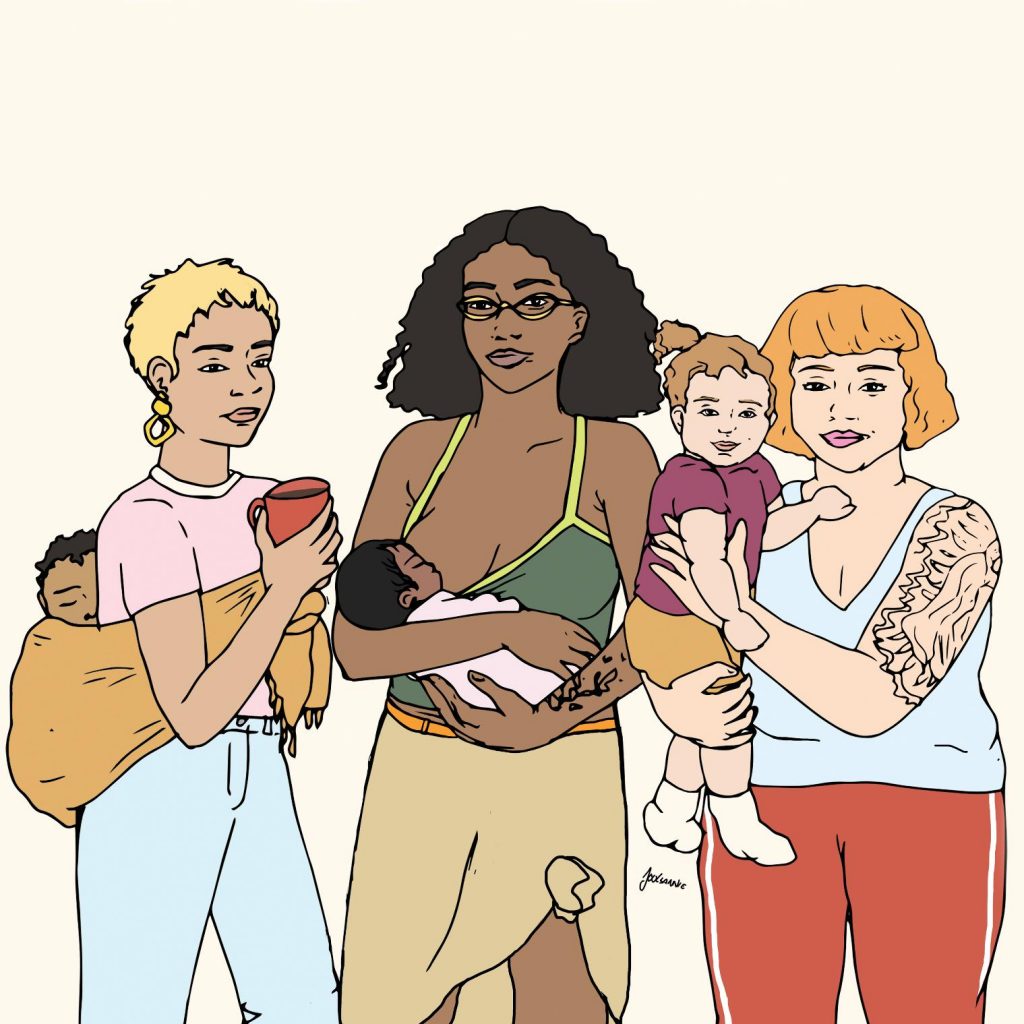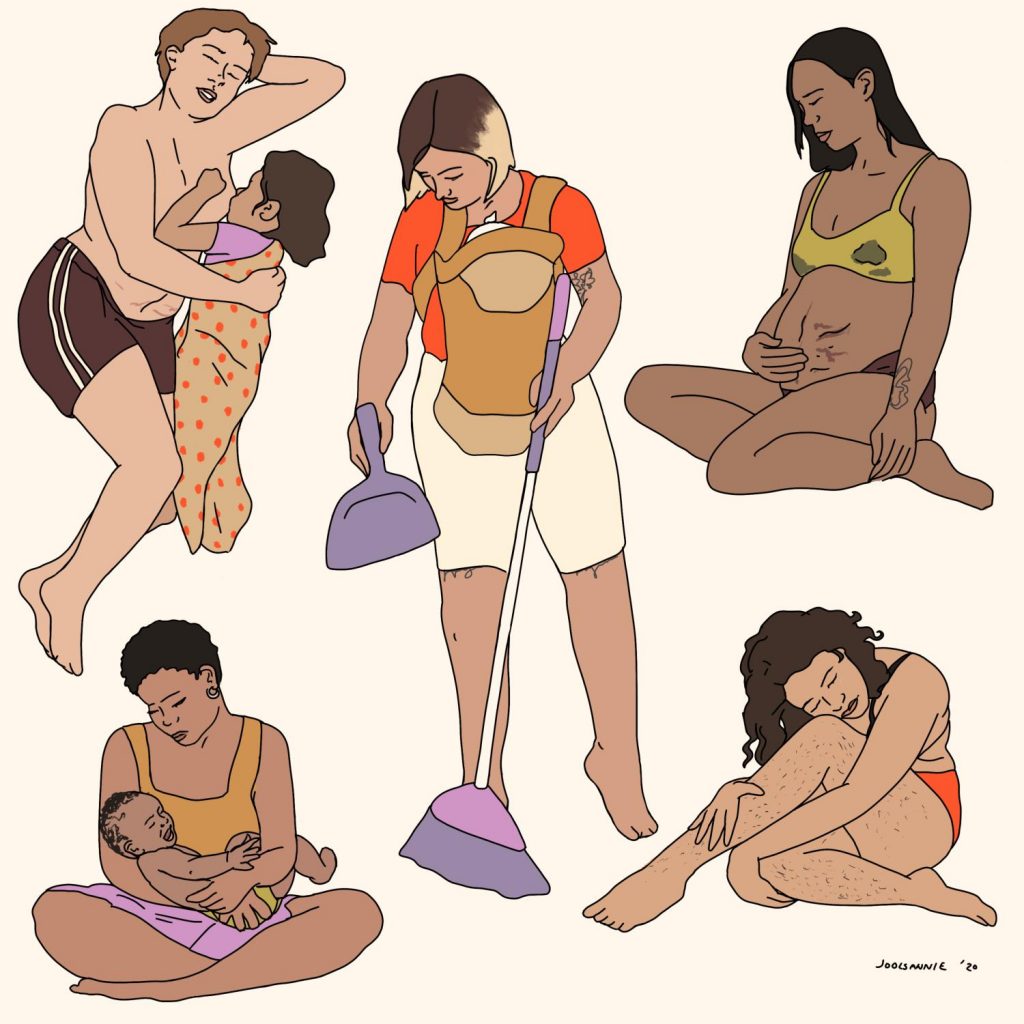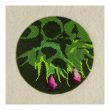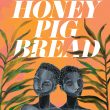
I met visual artist Julia Hutt on the children’s floor of the Alderney Gate Public Library just before the second wave of COVID-19 lockdowns in Fall 2020. It was eerily quiet. All of the toys and board books had been removed, and the library’s programming was cancelled. I brought my seven-month-old son with me, who was crawling, babbling, and reaching for anything that he could. As he crawled towards Julia, she warmly reached her hands down to him, and asked, “Do you want to come up?”
I was struck by her maternal warmth, her ability to carry on our conversation while multitasking, and how this scenario was the perfect setting in which to discuss Julia’s drawings, animations, and activism. Julia is a Dartmouth-based artist and mother who makes work centred around pregnancy and the postpartum experience. Her drawings capture the complexities of the incredible love and warmth juxtaposed with the isolation and lows that can come with parenting.
Tori Fleming: I first found your work through my doula. I was so terrified when I was pregnant, and I felt like all depictions of pregnancy, motherhood, or birth were either terrifying images of people in pain, deeply resenting their children, or gorgeous depictions of beautiful people who felt only happiness and had no flaws. It seemed clear to me that the second option wasn’t true, so maybe everything was actually horrible? That was when my doula said, “You just need to find images that exist in the middle space,” and sent me your work.
I found it very helpful to look at something and think of it as being realistically my life. Is capturing that complexity a goal of yours? Do you think about how rare those images are when you’re making them?
Julia Hutt: When I was pregnant, I started following mom pages and seeking mother stuff and parenting stuff, and I saw a lot of really manicured imagery. I was starting to have conversations with people about their experiences with having kids or babies and it was opening up this whole new realm of knowledge. I felt like I was learning so much and it was from conversations that people were having with me because I was pregnant. I started doing a lot of pregnancy portraits. You want to feel beautiful during your pregnancy even though you don’t. Sometimes it’s really hard to.
As I had Georgina, I would think oh, I’m gonna just draw a scene of the situation we were in this morning or oh, I’m gonna draw this thing that a friend was talking to me about. Every time I would draw these scenes and share them, I was really overwhelmed by the response from people who would say, “Yeah, that’s me, that’s my life right now.”
It was really nice and I was encouraged by people sharing their experiences with me. That’s what I liked about making more of the day-to-day images instead of a glorified thing or this focus on the really hard parts. There are really hard parts, they’re definitely in there, too.
Fleming: I’ve seen your work touch on things like infant loss and miscarriage, or even just how hard the day-to-day can be, but it doesn’t seem all encompassing in your work. So often, parenting is presented as a binary that says it has to be all hard or all good.
Hutt: I don’t like the binary in anything. I guess that’s why the day-to-day images seem like the most truthful, because it’s where a lot of people are at, and they can just sit with a drawing and be like, yeah, that was me.
Fleming: When I think about sustenance, I think of receiving something or being nourished, but sustenance also requires taking something. Being a birthing person is a unique experience in that it’s one of the few experiences in life where we’re physically being the sustenance, physically giving away part of our bodies. It can become really depleting.
I had expected that in pregnancy, but I didn’t realize how much I would physically be giving myself away postpartum. In your work there are many depictions of that physical labour, whether it’s lactation stains or people who are nursing while multitasking, because that’s the only option they have.
Hutt: I nursed Georgina for a year; I had high hopes for nursing, and it didn’t let me down. It was an incredible experience, probably one of the most incredible experiences I’ve ever had. I hope I get to have it again, but it was really hard.
It’s the binary thing again. I realized it would be one of the best things I’ve ever done, but also one of the hardest and most draining, and some days I wished I wasn’t doing it. It takes from you, physically and mentally, and yet you have this incredible result. I wanted to throw it in drawings all the time; it became this thing that I wanted to talk about as much as I could, because it really isn’t discussed much.
We don’t talk about the labor distribution. I looked at breastfeeding like I wanted to do it, like I’m happy to be the person who is going to do this, but I think that there should be a lot more awareness of the work involved for people going into it, whether they’re the nursing person or not.
My lactation related drawings are made to have those conversations. I’m really into the idea of lactation and birthing being things that are talked about more with young kids, as well as people who aren’t going to go through that process themselves, but might be the main support person for someone who is. There’s so much to know if you’re going to be that support person. We don’t prep people enough for that for work, why?
Fleming: My own birth experience really got me thinking about how there are these huge holes in the birthing system. I took some prenatal classes and I had two doulas. I really sought out support and I still felt kind of lost. I remember being in the hospital thinking there are people who just walk into this situation with no support, they just come here – that is wild to me. In your work you’ve shown support for BIPOC birth workers, doulas, and organizations like Wellness Within. How do you see birth activism as part of your practice?
Hutt: I think it’s a really important part of the way we change the world we live in. We know the system that we’re in is patriarchal and racist in its construction, and that affects birthing. It’s just like you said—there are so many holes for so many people, so it’s a good starting point.
Raising families, and doing it in healthy ways where everyone feels supported, is actually probably one of the most important things that we can have in society, right? To make sure that people are healthy and cared for and receive everything that they need. It actually makes so much sense for that to be like a starting point. For birth work to be something that isn’t talked about needs to be changed.
My thing isn’t wanting more doulas and midwives practicing because people should be able to have home births, or something. We know if you have enough money and you’re connected, you can hire doulas and all of that stuff. We want to take away the aspect of it being a privileged thing to do. The goal is that it is normalized for everyone.
Hospitals obviously have a place and a role to play, but I do think that the medicalization of birthing is often taken too far. If there was more money put into developing midwifery and doula programs, we’d have more people learning, and they’d be led by not just white women. A lot of the time, white women don’t understand all of the layers, because we have a particular experience. That’s okay, but these things need to be led by people who really know and understand. Then maybe we can move towards a society that allows people to go into giving birth and starting their families in a way that isn’t traumatic, with a tone that isn’t set by their hospital experience, which we know can be bad a lot of the time, especially for people who aren’t white.
Fleming: There are layers of being believed and listened to. We know in the medical system that women’s pain is believed less than men’s, and that people of colour’s pain is believed less than that of white people. So, if you’re a woman of colour, it’s just really stacked against you.
Hutt: And that is just the worst possible thing for someone who is starting a family, you know? I also see prisoner justice work as very central. It’s again a thing that people don’t necessarily think about if they’re not connected to it in any way.
People talk about decolonization, but you can’t even start to think about that if you’re not thinking about the prison system. You don’t see enough prison justice work and work around homelessness issues. In Halifax, issues of housing and health access are getting so intense, but these are the types of conversations that politicians still aren’t having in a real way.
Fleming: I was completely unaware—probably because I just had never thought about it before, to be honest—of the way homelessness affected people giving birth. Unhoused birthing people often immediately have their babies taken away. I really cannot wrap my head around the idea that we are paying for a system to put these kids in when the only crime their parent has committed is not having money.
Hutt: There’s no crime! Exactly! It’s crazy! It’s also the same with substance abuse. People are being punished in the most severe way, taking a child from a mother who just birthed that child. It doesn’t make sense.
Fleming: In my short time in the hospital, I saw somebody have their child taken away and I thought to myself wow, what are the chances that I was here for this insane situation. And then I talked to the social worker and I realized it’s actually not that crazy that I saw that. I thought I had witnessed a once in a blue moon kind of situation at the hospital, but, in reality, it’s a regular part of their lives there.
Hutt: Exactly. I don’t know how to put it into a succinct way, but that is why birth work should be centred. It has to be centred in a way that is understanding of all the layers. That’s why I really love groups like Wellness Within, because they just get that.
Fleming: There are so many complexities to body image both during pregnancy and postpartum. Your work has many types of bodies that I don’t normally see in images of pregnancy. I’m thinking of the typical images of a beautiful, blonde, white woman clutching her belly in a flowing white dress. In your work, you have racially diverse bodies, you have fat bodies, you have stretch marks. The people in your images look like people I know.
Hutt: Yeah, I guess it’s making me think of when I was growing up and I would see my mom’s body. There would be a disconnect with what I saw on her body and how I would see women’s bodies depicted in images. It’s so unhealthy because you can internalize that and think, what is wrong with that body? As I got older, I realized that body gave birth to and nursed four children, and that body has aged. That’s a natural body I saw growing up and it’s just so weird that you can reject that, or not want to accept it. It’s so sad really. So, my work is about celebrating every birthing body, because you go through so much and everyone’s experience with it is different.
It’s really hard to always appreciate your body, especially after you’ve gone through birth and the postpartum changes. It’s hard to settle back, and sometimes there isn’t a settling back. I try to celebrate birthing bodies or lactating bodies so that people can come upon an image and think, oh cool, you’re celebrating that and showing that.

Fleming: It’s pretty one-dimensional how we talk about birthing bodies. When people talk about postpartum they tend to talk about getting your body back in terms of losing weight. Going into my own experience, I had that expression in my head and I thought, ok, I’m prepared to not ever go back to my previous weight. I’m wrapping my head around the weight thing and then suddenly I have this baby and I can’t sit up on my own for months.
Hutt: So much physical stuff that you don’t think about! For me, it was all the breast changes, which were so weird, and kind of cool, but also really hard to deal with. The hormone change was something that I didn’t feel prepared for. Even with miscarriage there can be an intense hormonal change that comes with being pregnant for a little while, then losing that baby, and then your body going back to a non-pregnant state.
It was really hard and I wasn’t prepared. I just didn’t know because people don’t talk about it.
Fleming: Speaking of things we don’t talk about, there are things you draw that I’ve never actually seen drawn before. In one of the prenatal classes I attended, there was a slideshow of what normal babies look like. The class was taught by two labour and delivery nurses and they discussed how it’s pretty common for people to see their babies and think this baby is not well, because they had no idea what to expect. They realized, after teaching for a while, that people freaked out because babies on TV don’t look the way newborns look.
In your work you have drawn vernix on the babies, umbilical cords, and linea nigra. Why do you think we’re so scared of those images and why are they important for you to draw?
Hutt: It’s a big question. I guess I think there’s still a lot of societal restraint, or weird ideas that it’s not proper or okay to talk about these things, or that it’s an over-share. This is something I was thinking about with miscarriages lately. I was talking to a few people recently who are expecting—but they’re still really early—and then I started thinking about how we’re not even supposed to say that we are in a pregnant state for three months, because after three months the chances of having a miscarriage go down quite drastically. Miscarriages are normal, but the idea that we shouldn’t share because we don’t want to risk sharing news of a miscarriage is part of what keeps them seeming like they aren’t normal, or they aren’t natural, or they don’t happen in one in four pregnancies. When you realize the numbers are so high, you realize, oh, okay, I’m likely to undergo this if I have a few pregnancies in my life. If you don’t know the numbers then you’re in a situation where you feel alone or unprepared.
Fleming: It also comes with this expectation that you’ll just go to work the next day. There will be no mourning process for you, there’ll be no physical recovery.
Hutt: Even with nursing. Sure you can have a company that’s set up with a room where a working mom could nurse, but maybe that doesn’t cover it. Maybe in that workspace there isn’t an accepting environment around what it actually takes to feed a baby from the body, physically, every day. If the conversation isn’t normalizing the experience then we aren’t actually prepared for it. We are still operating from this fear of talking about it or thinking that we’re only supposed to talk to our mothers or someone who also went through it.
Fleming: People who have confirmed they have had that experience.
Hutt: Yeah! Like, oh you are someone I can talk to about birthing. There’s often a mutual understanding. But could I not also do that with my partner? Or a friend that isn’t in a phase of life where they’re going to have kids, or with someone who is never going to?
Fleming: Yeah, absolutely. When I gave birth, I was so surprised how immediately nobody wanted to talk about my experience. The first question is always, how’s the baby? I felt like I had just done the most insane thing.
Hutt: You did. When I went through birth—and I had a long labour—I felt this thing I’ve never ever felt. I wanted to talk about it, and I wanted people to understand how monumental it was.
Fleming: It feels like you’ve just won the gold medal at the Olympics and there’s no ceremony. Please don’t talk about it again, here’s your medal, go home.
Hutt: Yeah, celebrate that! I want people who see my drawings to feel like they can just go ahead and celebrate that thing they did, celebrate that they nursed for so long, or gave birth, or whatever it is. It’s all hard and it’s all amazing. Just celebrate that.
















Leave a Reply